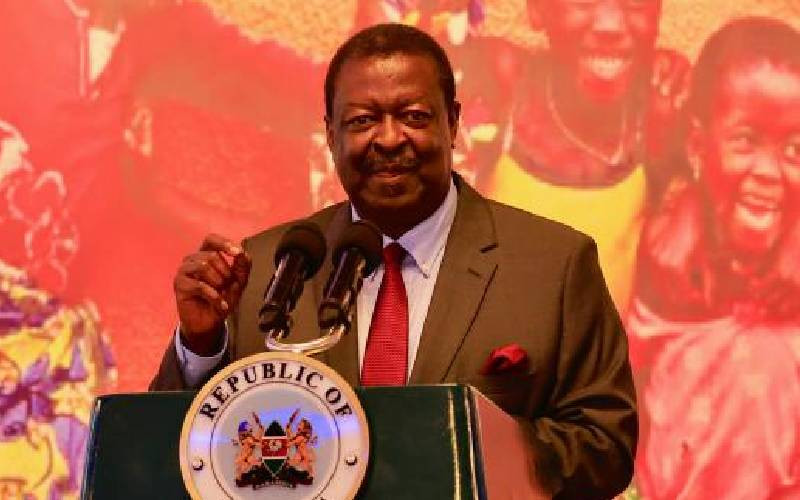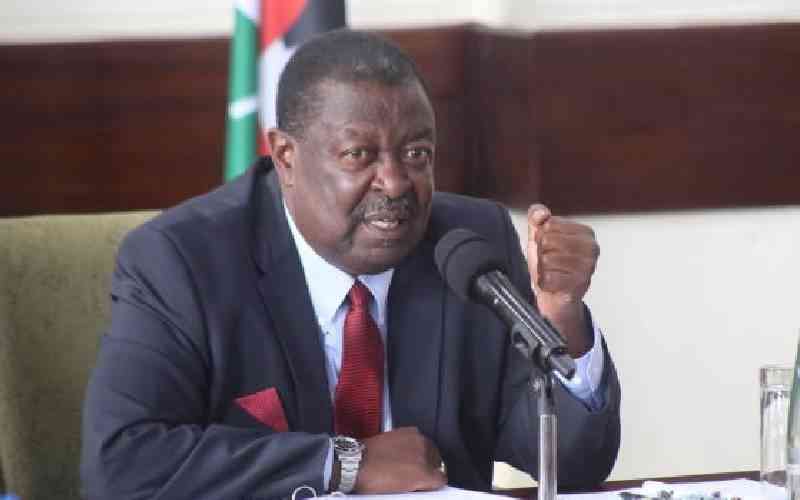By DR ADAMS OLOO
The coalition between TNA/URP and UDF was certainly not the coalition of the willing, but a coalition of the desperate. The coming together of ODM/ Wiper/Ford-K and a host of another 10 smaller parties informed it.
Cord unravelled Uhuru and Ruto and they swiftly abandoned their short-lived bravado that had seen them seal a deal between their respective parties.
Their initial bravado was mainly informed by the flawed assumption that Kalonzo did not only have the numbers and that under no circumstances would he agree to play second fiddle to another candidate.
It was also most likely informed by the fact that Mudavadi would at best only attract a coalition of parties with less traction including Peter Kenneth’s KNC and Gideon Moi’s Kanu.
But as Cord prepared to sign the agreement and as the sea of humanity gathered outside the KICC, reality dawned on Uhuru and Ruto and forced them to renegotiate a pact that was barely 24.
They reached out to Mudavadi who they had all along treated with disdain and who they had taken offence with for asserting that Kenya cannot forge ahead without close co-operation with the international community.
The aim was not just to present a counter to Cord but also to compete for media space and public perception that for most of that Super Tuesday was Cord dominated.
The desperation by the duo gave Mudavadi an upper hand, as the ICC suspects direly need him not only to shore up their numbers against Cord but also to cleanse them of the ‘fellowship of The Hague suspects’ tag that is fast gaining currency. On the other hand Mudavadi dearly needed the duo, as his short presidential aspirant sojourn appeared to be screeching to a halt.
Against this background, there is speculation that Mudavadi is likely by consensus to be named as the pacts candidate an outcome that would relegate Uhuru to contest the Gatundu South constituency to enable him ascend to the Majority leader position reserved for either of the two. However, the official position announced outside the Laico regency is that the two would face off in a fortnight with the winner becoming the pacts Presidential candidate while the looser takes the unassured Majority leader slot. The big question then is will it be by consensus and therefore Mudavadi or will it be a primary between the two and therefore Uhuru.
Whatever option, dire political implications make the pact a double-edged sword. The first option of consensus would see Mudavadi as the flag bearer and is likely to be premised on the following grounds.
First, it is assumed that it will lock in the elusive Luhya vote for the pact as this would present the first ever real shot for the Luhya at the presidency since independence.
Second, it is assumed that such an eventuality would deliver block votes from the three most numerically large communities as per the last census.
Third, that a Mudavadi candidature would appease the international community as he is not a suspect in the ICC trials.
But can these three premises stand the test of time in the upcoming grueling contest against Cord that also has yet to name its presidential flag bearer.
Stay informed. Subscribe to our newsletter
On the first premise, it is a fact that Luhya unity has perennially been elusive and it was only in 2002 that the NARC wave realised it but even then there was the small blemish of Chris Okemo scraping through on the Kanu ticket in Nambale constituency.
Other electoral years saw the Bungoma and Trans-Nzoia counties voting diametrically against Busia, Kakamega and Vihiga with a mixed bag in 2007 when ODM also penetrated Bungoma and
Trans-Nzoia bagging two of the six seats. A Mudavadi presidency pegged on Luhya unity would have to contend with sub-tribe rivalry that was experienced in earlier elections especially in 1992 and 1997.
In both years the Bukusu remained entrenched in Ford-K while Mudavadi and Shikuku in 1992 were the face of the other Luhya sub-tribes in the then ruling party Kanu and Ford-Asili respectively.
In fact it will not be lost on observers that in 1997 when Wamalwa Kijana, a Bukusu made a pitch for the Presidency,-Mudavadi defied the ethnic gene of Kenya politics and successfully led other Luhya sub-tribes to throw their lot with Moi and Kanu.
It was a stab on the back of the Bukusu that contributed to Wamalwa coming a poor fourth behind Moi, Kibaki and Raila.
The writer is Chairman of the Department of Political Science and Public Administration, University of Nairobi.
This is the first of a two-part opinion on the politics around the Cord and Jubilee pre-election alliances. The second part will be published tomorrow.
 The Standard Group Plc is a
multi-media organization with investments in media platforms spanning newspaper
print operations, television, radio broadcasting, digital and online services. The
Standard Group is recognized as a leading multi-media house in Kenya with a key
influence in matters of national and international interest.
The Standard Group Plc is a
multi-media organization with investments in media platforms spanning newspaper
print operations, television, radio broadcasting, digital and online services. The
Standard Group is recognized as a leading multi-media house in Kenya with a key
influence in matters of national and international interest.
 The Standard Group Plc is a
multi-media organization with investments in media platforms spanning newspaper
print operations, television, radio broadcasting, digital and online services. The
Standard Group is recognized as a leading multi-media house in Kenya with a key
influence in matters of national and international interest.
The Standard Group Plc is a
multi-media organization with investments in media platforms spanning newspaper
print operations, television, radio broadcasting, digital and online services. The
Standard Group is recognized as a leading multi-media house in Kenya with a key
influence in matters of national and international interest.









